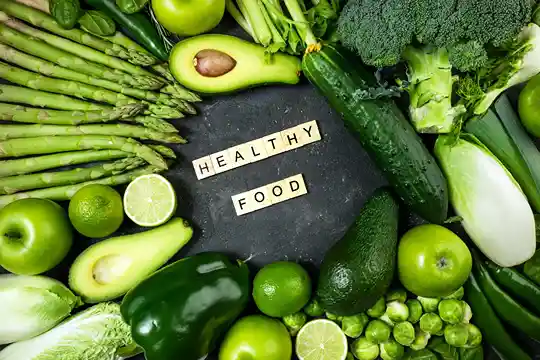
Are you ready to take a bite into a healthier lifestyle? Developing healthy eating habits is key to unlocking a world of benefits for your body, mind, and overall well-being. From boosting your energy levels to managing your weight, nourishing yourself with nutritious foods can work wonders.
So, let's dive right in and discover 10 practical tips that will help you cultivate better eating habits.

Here are the first two tips to get your fitness on track!
Picture this: a plate bursting with an array of vibrant colors. Not only does it look visually appealing, but it also packs a nutritious punch! By incorporating a variety of colorful fruits and vegetables into each meal, you can provide your body with essential vitamins, minerals, and antioxidants.
To make this fun and easy, consider investing in some handy kitchen tools like a spiralizer to create colorful veggie noodles or a blender to whip up delicious and nutrient-packed smoothies. These tools can add excitement to your meals without breaking the bank or endorsing any specific brands.
Have you ever found yourself devouring an entire bag of chips without even realizing it? We've all been there! That's where mindful eating comes in. It's all about being present and fully engaged with your food.
Start by paying attention to your hunger cues. Are you truly hungry or just eating out of boredom? Take small bites, savor each mouthful, and chew slowly. Not only will this enhance your enjoyment of food, but it also allows your brain to catch up with your stomach, preventing overeating.

Are you ready for the mid-course of our journey towards developing healthy eating habits? Great! Let's dive right in and explore three more tips that will help you nourish your body and age gracefully.
Staying hydrated is a key ingredient in the recipe for a healthy lifestyle. Adequate water intake supports digestion, boosts energy levels, and maintains overall well-being. Swap sugary drinks for good ol' H2O and reap the benefits.
But how can you ensure you're drinking enough water throughout the day? Well, investing in a reusable water bottle or a fun, colorful cup can be a game-changer.
Understanding portion sizes is essential for maintaining a balanced diet. Instead of relying on complicated measurements, why not use everyday objects as references? For example, a fist is roughly equivalent to one serving of vegetables or grains, while the palm of your hand can guide you toward an appropriate portion of protein.
Embrace fiber-rich foods such as fruits, vegetables, whole grains, legumes, and seeds. They come in various shapes and sizes to cater to diverse dietary preferences and budgets. So whether you're vegetarian or pescatarian, there's an abundance of fiber-packed options waiting to be enjoyed.

We all get the occasional sweet tooth craving. Here's how you keep your fitness in check even in such cases.
Protein can be found in a variety of sources, so there's something to suit everyone's dietary preferences. If you're a meat-eater, lean cuts of chicken or turkey can be great options. For vegetarians, tofu and tempeh are protein-packed alternatives. And if you're a pescatarian, salmon and other fatty fish are excellent choices.
We all have those moments when our sweet tooth demands attention. Rather than reaching for sugary treats that can lead to energy crashes and weight gain, why not explore healthier alternatives?
One option is to satisfy your cravings with fruit. Whether it's a juicy apple or a handful of berries, nature provides us with sweet delights that are packed with vitamins and fiber.
To support healthy digestion and weight management, aim to finish your last meal of the day before 7 p.m. whenever possible. This gives your body ample time to digest before bedtime.

Cooking at home may seem like a hassle, but it can be a game-changer for your health and wallet. By dining in more often, you have more control over the ingredients you use, portion sizes, and cooking methods.
Cooking at home allows you to save money by cutting down on expensive restaurant bills. It also promotes better portion control, as restaurant meals tend to be larger. Additionally, you can avoid hidden sugars and unhealthy additives commonly found in processed foods.
Don't let leftovers go to waste! Transform them into new dishes by adding fresh ingredients or repurposing them in creative ways. For example, turn last night's chicken into a flavorful salad or use leftover veggies in a stir-fry.

By incorporating these tips into your daily routine, you can make a positive impact on your nutrition and well-being:
Pay attention to your hunger cues and savor each bite, practicing mindfulness while eating. Avoid eating after 7 p.m. and try to get conscious about your portion sizes.
Stay adequately hydrated by drinking enough water throughout the day and avoiding sugary beverages.
Include fiber-rich foods in your diet to promote digestive health and help you feel fuller for longer periods.
Satisfy your sweet cravings in healthier ways by exploring no-sugar dessert recipes or options.
Dine at home with home-cooked food more often.
With determination and persistence, you have the power to transform your diet and embrace a healthier way of eating. So go ahead, take that first step—your body will thank you!

The information provided in this article is for general informational purposes only. It is not intended as a substitute for professional advice, diagnosis, or treatment. Always consult with qualified professionals regarding any questions or concerns you may have about your health or specific circumstances. Reliance on the information in this article is at your own risk. We do not endorse or recommend any specific products, apps, programs, resources, or appliances mentioned in this article.
